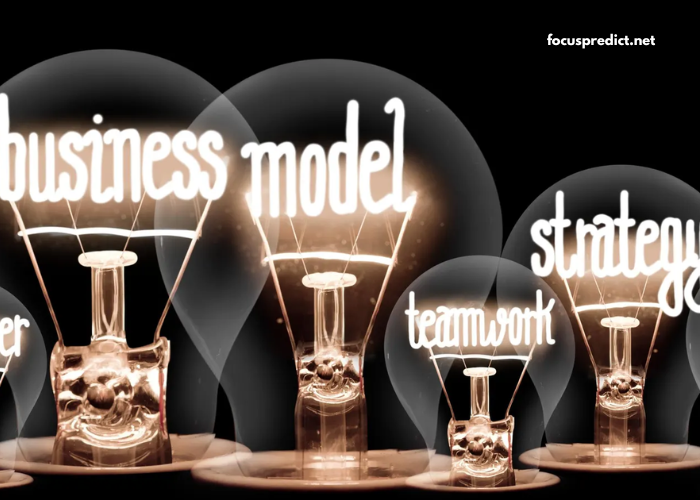In today’s fast-paced and digitally driven world, choosing the right business model can be the difference between success and struggle. Entrepreneurs and businesses looking for rapid growth must align their strategies with proven models that offer scalability, flexibility, and resilience. In this guide, we’ll explore the Top 5 Business Models for Fast-Track Success that have propelled startups to unicorn status and traditional businesses into modern empires.
Why Business Models Matter in 2025 and Beyond
A business model is more than just a revenue stream—it’s a blueprint for how a company creates, delivers, and captures value. With changing market dynamics, increasing competition, and rapidly evolving consumer behavior, selecting the right model is crucial.
Subscription-Based Business Model
The subscription model has taken center stage in industries ranging from media to SaaS (Software as a Service), fitness, e-commerce, and even food delivery. It’s a model based on recurring revenue—offering products or services for a regular fee.
H3: Key Advantages of the Subscription Model
-
Predictable Revenue Stream: Ensures consistent cash flow which aids in forecasting and scaling.
-
Customer Loyalty: Encourages long-term engagement and brand loyalty.
-
Lower Customer Acquisition Cost Over Time: Loyal customers reduce the need for frequent marketing.
-
Upselling Opportunities: Easier to introduce new products to an existing customer base.
H3: Examples of Successful Subscription Businesses
-
Netflix: Revolutionized media consumption.
-
Spotify: Offers tiered pricing and family plans.
-
Dollar Shave Club: Disrupted the grooming industry with affordable monthly kits.
H3: How to Succeed With This Model
-
Focus on customer experience.
-
Offer tiered pricing plans for flexibility.
-
Use analytics to track behavior and personalize offerings.
Platform-Based Business Model
A platform business model connects two or more user groups (consumers and providers) and facilitates their interactions. Unlike traditional businesses that create products or services, platforms create the infrastructure for others to deliver value.
H3: Key Advantages of the Platform Model
-
Scalability: The more users onboard, the stronger the platform becomes (network effect).
-
Lower Operating Costs: Platforms don’t need to own inventory or services.
-
Global Reach: Can operate across geographies with minimal marginal cost.
H3: Platform Model in Action
-
Airbnb: Doesn’t own a single property but has disrupted the hospitality industry.
-
Uber: Connects riders and drivers on a global scale.
-
Amazon Marketplace: Allows third-party sellers to reach a vast audience.
H3: Critical Success Factors
-
Build a secure, reliable, and user-friendly interface.
-
Focus on trust and transparency (reviews, verification).
-
Ensure value for all sides of the market (sellers, buyers, service providers).
Freemium Business Model
The freemium model offers basic services for free while charging for premium features. It’s commonly used in the digital space, particularly in SaaS, mobile apps, and games.
H3: Core Benefits of the Freemium Approach
-
Low Barrier to Entry: Attracts a large user base quickly.
-
Customer Acquisition Funnel: Converts free users to paying customers over time.
-
Viral Growth Potential: Encourages sharing and word-of-mouth.
H3: Market Leaders Using Freemium
-
Canva: Offers free design tools, charges for advanced features and assets.
-
Dropbox: Free storage to start, premium plans for business and high-capacity needs.
-
Zoom: Free meetings with time limits; advanced tools in paid plans.
H3: Making Freemium Work
-
Ensure the free product is valuable enough to retain users.
-
Offer clear value differentiation in paid versions.
-
Use data analytics to track usage and encourage upsells.
E-Commerce Business Model
The e-commerce model refers to selling goods or services online. While this model has been around for decades, its evolution with mobile, logistics, and AI integration has made it one of the most powerful growth drivers in modern business.
H3: Types of E-Commerce Models
-
B2C (Business-to-Consumer): Traditional online retail (e.g., Amazon, Flipkart).
-
B2B (Business-to-Business): Wholesale suppliers (e.g., Alibaba).
-
C2C (Consumer-to-Consumer): Peer-to-peer marketplaces (e.g., eBay).
-
D2C (Direct-to-Consumer): Brand-owned online stores (e.g., Allbirds, Warby Parker).
H3: E-Commerce Growth Accelerators
-
Mobile commerce and one-click checkout.
-
AI-driven personalization and recommendations.
-
Social commerce via platforms like Instagram and TikTok.
H3: Challenges and How to Overcome Them
-
Logistics and fulfillment: Partner with reliable shipping providers.
-
High competition: Focus on brand storytelling and niche targeting.
-
Customer trust: Offer transparent return policies and secure payments.
Affiliate Marketing Business Model
Affiliate marketing involves promoting products or services from other companies and earning a commission for each sale or lead generated through your referral.
H3: Why Affiliate Marketing Works for Fast Growth
-
Low Startup Costs: No inventory or product development needed.
-
Scalable Income: Commission-based earnings can grow exponentially.
-
Passive Income Potential: Content and SEO can generate recurring sales.
H3: Popular Affiliate Platforms and Programs
-
Amazon Associates: One of the largest affiliate programs globally.
-
ShareASale: Access to thousands of vendors across niches.
-
ClickBank: Popular for digital products and high commission rates.
H3: How to Build a Successful Affiliate Business
-
Choose a profitable niche with high demand.
-
Invest in content marketing: blogs, reviews, YouTube videos.
-
Focus on SEO and email list building for organic reach.
-
Be transparent with your audience to build trust.
Choosing the Right Model for Your Business
Selecting the right model depends on several factors, including:
-
Industry and niche.
-
Startup capital and resources.
-
Target audience behavior.
-
Competitive landscape.
-
Personal strengths and expertise.
H3: Ask Yourself:
-
Can I deliver continuous value over time (subscription)?
-
Do I want to facilitate others or create my own product (platform)?
-
Is there a freemium hook that can lead users to upgrade?
-
Can I manage logistics, inventory, or dropshipping (e-commerce)?
-
Do I have marketing skills or a personal brand (affiliate)?
The Hybrid Model Approach
Some of the most successful modern businesses blend multiple models. For example:
-
Spotify combines freemium + subscription.
-
Amazon operates e-commerce, platform (Marketplace), and subscription (Prime).
-
Udemy uses both platform and affiliate strategies.
H3: Benefits of a Hybrid Approach
-
Diversified revenue streams.
-
Greater flexibility and resilience.
-
Enhanced customer experience.
Final Thoughts: Fast-Track Success Comes With Smart Execution
Business models are not one-size-fits-all. What works for one brand may not work for another. However, the models mentioned above have a proven track record for scalability, profitability, and adaptability. The real key lies in execution—how well you understand your customers, leverage technology, and stay agile.
Whether you’re launching a startup or pivoting an existing venture, choosing the right business model is the first step toward achieving fast-track success.




